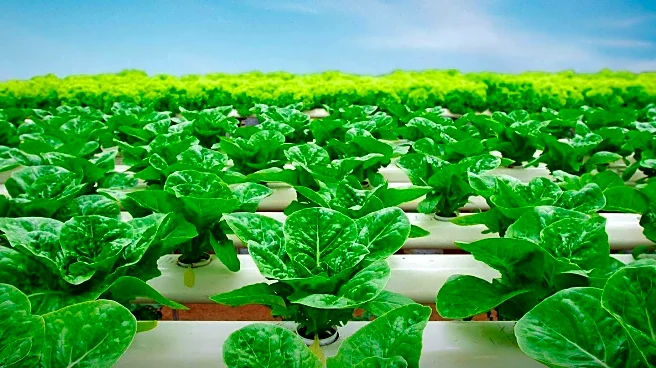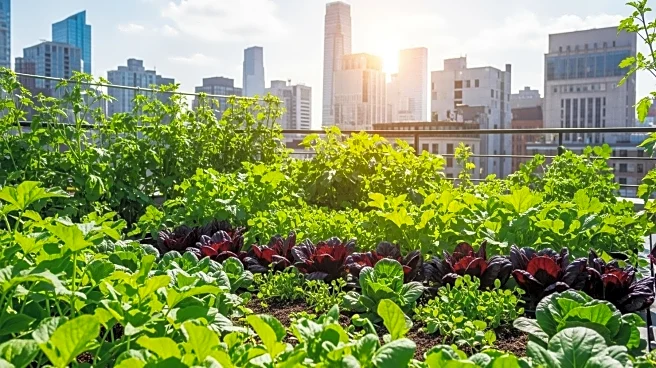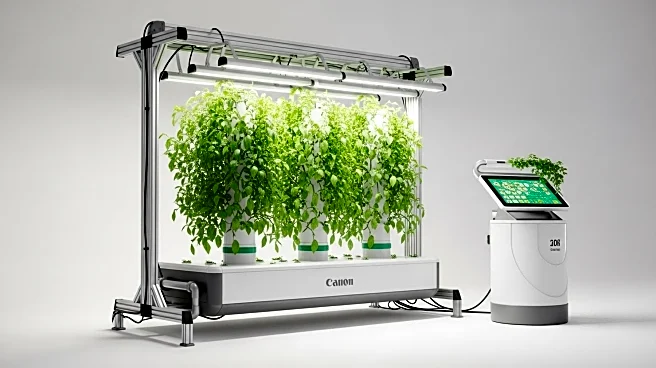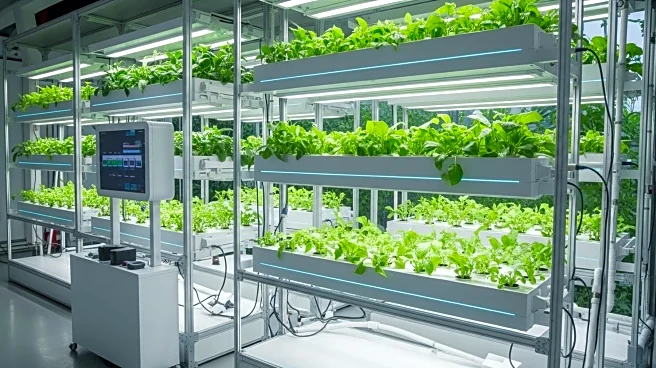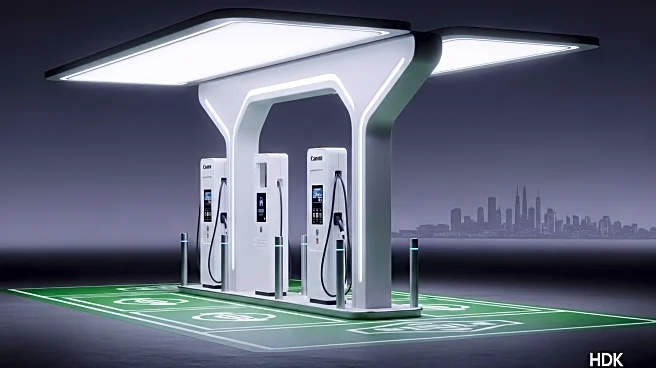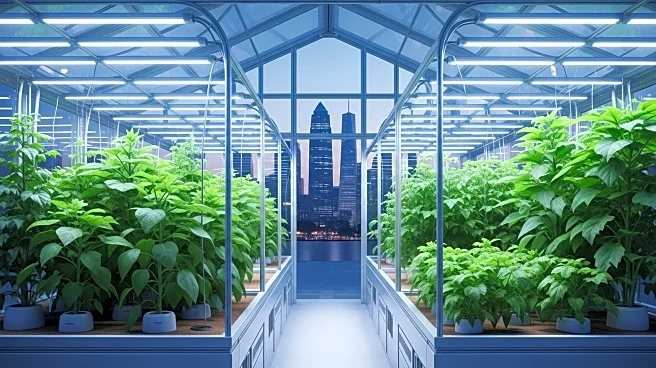What's Happening?
Urban agriculture is gaining prominence as a viable solution to address food security issues, particularly in the face of climate change and urbanization. Historically, urban farming played a significant role during World War I and II in the United States, providing a substantial portion of the country's food supply. Today, urban agriculture has evolved into a sophisticated system utilizing vertical farming, LED lighting, and smart agriculture technologies. These advancements allow for efficient, sustainable food production that is less vulnerable to climate fluctuations. Countries like China are leading the way, with significant investments in urban agriculture research and development. The Chinese government has set ambitious targets to increase food production through urban farming, aiming to meet a substantial portion of the country's food needs through this method by 2028.
Why It's Important?
The rise of urban agriculture is crucial in addressing the growing global demand for food, especially as traditional farming faces challenges from climate change and resource limitations. Urban agriculture offers a sustainable alternative that can enhance food security, reduce environmental impact, and promote organic farming practices. By integrating AI and smart technologies, urban farming can achieve higher productivity and efficiency, making it an attractive option for densely populated areas. This shift not only supports food security but also contributes to environmental conservation and public health by reducing reliance on chemical inputs and promoting biodiversity. As urban populations continue to grow, the importance of urban agriculture in ensuring a stable food supply will only increase.
What's Next?
As urban agriculture continues to expand, policymakers and stakeholders will need to develop supportive frameworks and policies to facilitate its growth. This includes investing in research and development, providing incentives for urban farming initiatives, and fostering collaboration between governments, private sectors, and research institutions. Countries facing severe impacts of climate change, such as those in South Asia, may look to China's model for guidance in implementing urban agriculture solutions. The focus will likely be on scaling up production, reducing costs, and integrating advanced technologies to maximize the benefits of urban farming. As these efforts progress, urban agriculture is poised to play a pivotal role in shaping the future of global food security.

